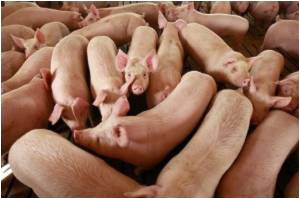Although swine influenza viruses usually sicken only pigs, potentially one might also spark a pandemic in people, as occurred with the 2009 H1N1 influenza virus.

The researchers also traced the relative abundance of each of three major swine influenza virus lineages: classical, Eurasian avian-like and triple reassortant. Examples of all three of these long-established virus family lineages were found in varying proportions in samples gathered between 2002 and 2009. Before 2003, the classical lineage predominated; by 2005, the Eurasian lineage, first detected in 2001, had become most common. The most recent samples contain not only viruses from the three previously established swine lineages, but also from the new 2009 H1N1 strain. It is not yet known whether the new pandemic strain will permanently establish itself in swine.
According to this analysis, the three swine influenza virus lineages have crossed geographic boundaries, including continents. Such extensive co-circulation of multiple strains facilitates gene-swapping between viruses, note the researchers, and they recommend continued surveillance of swine influenza genetic diversity to better understand how this process might give rise to variants with the potential to cause human flu epidemics. Their baseline data not only show the evolutionary dynamics in swine influenza, but also highlight ways in which swine flu viruses might most readily adapt to cause infection in people.
Source-Eurekalert











